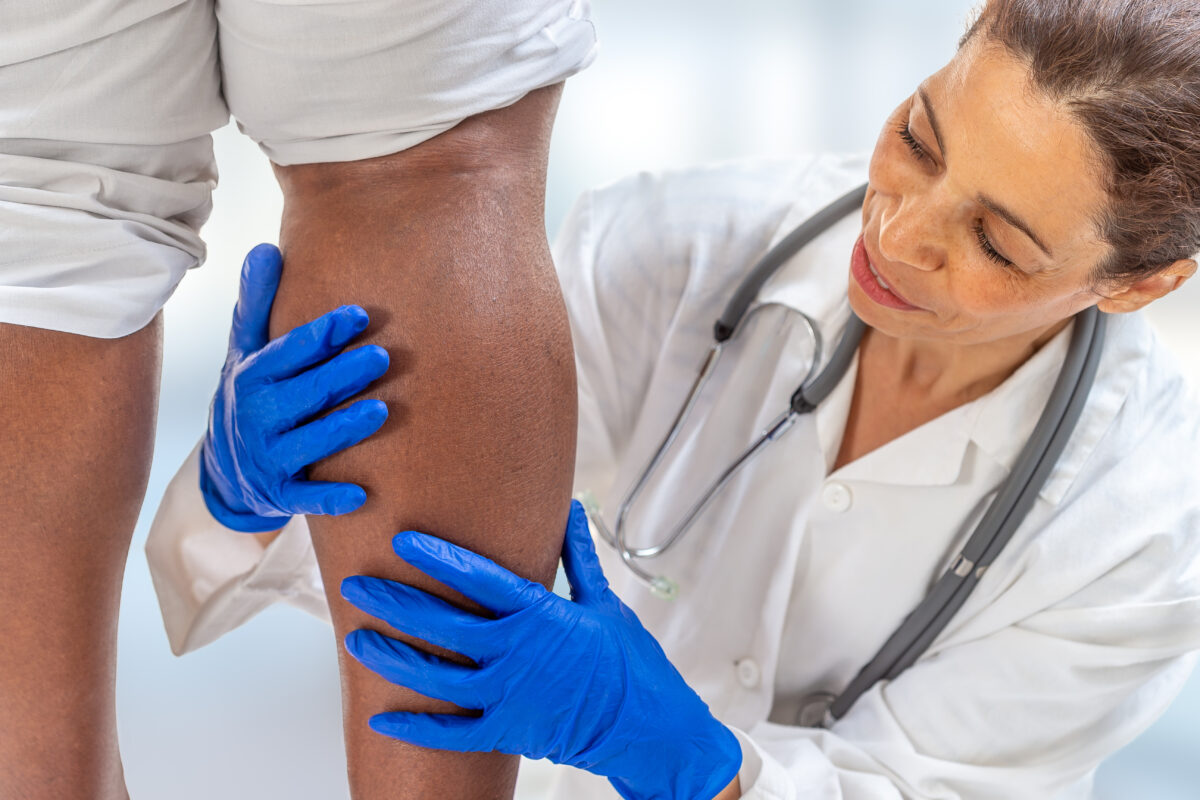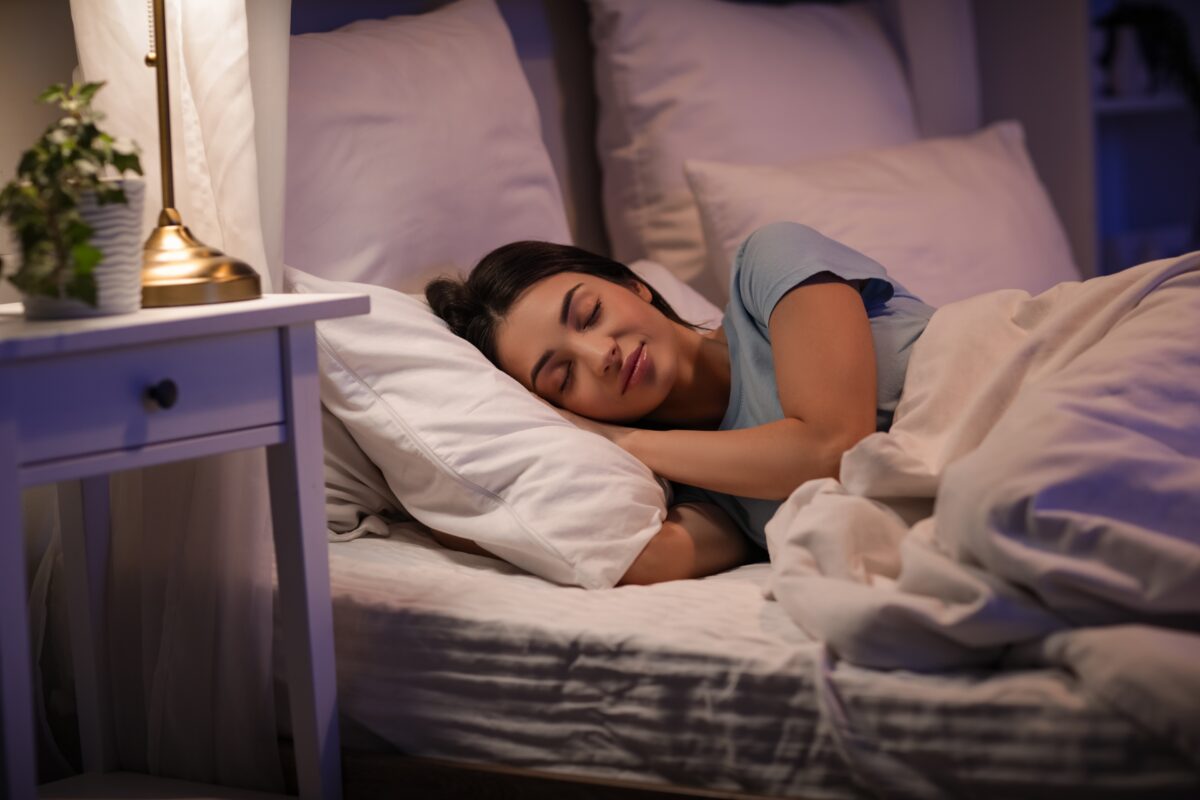Obstructive Sleep Apnea can quietly steal away restful sleep, which leads patients to relentlessly search for OSA treatment solutions. Patients with OSA stop breathing for short periods while sleeping. This happens when the upper airway closes off, cutting the flow of air.
Each time, the brain quickly jolts the body awake, just for a moment. Most don’t even notice these split-second wake-ups.
Still, sleep wrecks itself night after night. Your oxygen drops, and mornings can feel like a hangover that never leaves.
Men are hit the hardest. Numbers show they get OSA far more often than women. Days become a slog, with tiredness settling deep in the bones.
Everyday things like driving or working feel harder, and your irritability grows. A bit of forgetfulness can turn into real memory trouble, with some people end up snapping at loved ones without warning. Headaches show up before breakfast, and a gray cloud of low mood follows all day.
Leaving OSA untreated stacks up real risks, especially for men. Heart health takes a hit, and accidents at work or behind the wheel become more likely. Relationships stretch thin from grumpiness and sleep loss.
Overall, life can lose its brightness. The cause stays hidden for many, as people often blame stress or age, missing the real reason behind their exhaustion. Here’s an male-age breakdown of OSA patients:
| Age Group (Years) | Prevalence in Men |
| 30 to 49 | 30% |
| 50 to 70 | 40% |
Spotting OSA early changes everything. Life gets lighter when sleep is whole again, although choosing the right treatment is one of the most important tasks on your journey.
“Background Obstructive sleep apnea (OSA) is a common disorder, and continuous airway positive pressure (CPAP) is considered to be the gold standard of therapy,” states a report in ResearchGate and the Journal of Otolaryngology. “CPAP however is known to have problems with adherence, with many patients eventually abandoning the device.”
OSA Treatment: Why Men Face a Unique Challenge and Mentality
Obstructive Sleep Apnea is far more common in men, which means more males than females look into OSA treatment. Men face this issue up to three times more than premenopausal women, according to many studies.
There’s more going on than just statistics, though. Expectations placed on men play a huge role. Many guys feel pressure to act tough or shrug off health worries.
Sometimes, symptoms show up in subtle ways. Co-existing health issues in men don’t make things any easier. These layers make proper diagnosis and treatment a real challenge for many men.
Cultural attitudes often encourage silence, since seeking help gets mistaken for weakness. Some may chalk up tiredness to stress or long hours. Others simply hope things will get better on their own.
As a result, many never even get checked. The real numbers could be much higher than we think.
We need to change the conversation. Health campaigns and clinics must do more than just raise basic awareness. Messages should feel real, direct, and specifically speak to men’s experiences.
Additionally, care should be seen as a sign of taking charge. Instead of reinforcing old ideas, we should show that facing health head-on shows true strength. Men deserve support shaped just for them, as this approach opens the door to better outcomes and healthier lives.
“The prevalence of OSA increases with age and is twice as frequent in males,” states the American Urological Association. “In the United States, the prevalence of OSA stands at about 30% among men aged 30 to 49 years and 40% among men aged 50 to 70 years.”
If you’re a middle-aged or older guy, get screened for sleep apnea (OSA). It’s really common and linked to issues like erectile dysfunction (ED), slower erectile function recovery after surgery, lower testosterone, and Polycythemia if you’re on testosterone therapy. Basically, getting checked for OSA is important for your overall health.
Male Susceptibility: Prevalence, Physical, and Hormonal Factors
OSA treatment and sleep apnea get more common as people get older. It shows up about twice as often in men as it does in women.
In the United States, around 30 percent of men aged 30 to 49 suffer from OSA. That number jumps to 40 percent for men between 50 and 70. Risk usually rises with age but tends to level off after people hit their 60s or 70s.
Men across the globe seem to face this issue more often. Researchers believe certain physical traits in men put them at greater risk.
One big factor comes from neck size. Men often have necks larger than 17 inches, while women usually stay under 16 inches. A thicker neck can press on the airway, making it collapse during sleep.
Males often have longer upper airways, too, which doesn’t help matters. Fat gathers around the belly in men more than in women before menopause. This extra fat can put pressure on the airway, making breathing harder at night.
Also, obesity just makes the whole problem worse – in general.
Hormones tell part of the story as well. Higher testosterone in men may relax airway muscles during sleep. Estrogen and progesterone in women help keep the airway open, which gives some added protection.
Genes also play a role. A person born with a narrow airway will always face a higher risk.
Large tonsils, high blood pressure, nose blockages, smoking, or having diabetes all raise the chances for anyone, regardless of gender. Some of these risks you can control, and others you can’t.
The following are common OSA symptoms in men versus women:
| Symptom Category | Common in Men | More Common in Women | Overlapping Symptoms (Common in Both) |
| Classic Presentation | Loud snoring, Excessive daytime sleepiness (hypersomnia), Gasping/choking during sleep, Repeated breathing pauses (witnessed by partner) | Fatigue, Insomnia, Depression and/or anxiety | Loud snoring, Gasping for breath, Frequent nighttime urination, Restless sleep |
| Other Male-Specific | Morning headaches, Morning dry mouth, Irritability, Decreased libido/sexual dysfunction, Difficulty focusing while awake | Nighttime heartburn, Accident proneness, Changes in dreaming |
OSA Treatment is Where Biology Meets Behavioral Barriers and Risks
Biology oftentimes sets men up for trouble, and in turn, OSA treatment. Then social habits make things worse.
Many men skip checkups or ignore symptoms. They shrug off snoring or sleepless nights, often thinking it’s no big deal.
This mix leads to bigger health problems down the road. Ignoring OSA isn’t just risky, it’s dangerous.
Public health strategies also miss the mark when they focus only on risk. They need to see both sides — why men are more likely to get OSA, and why they hold back from seeking help.
Breaking through these walls matters. Nothing changes if men stay away from doctors, as better outreach combined with open conversation can turn things around.
The numbers show a spike in OSA as men reach their fifties and sixties. The years between thirty and seventy are a danger zone for untreated symptoms, since problems pile up, making life harder as the decades pass.
Unchecked OSA takes a toll on hearts and minds, and doctors should start asking questions early. Spotting trouble before it explodes saves lives.
Getting ahead of OSA isn’t just smart, it’s life-changing. Early action makes it possible for men to stay healthy and keep enjoying the things that matter most. Catching OSA sooner gives fathers, husbands, and workers more good years, with small changes leading to better futures.
Personal Journeys, Diagnostic Delays, and the Role of Loved Ones
Stories from real people show how hard it is for men to get OSA treatment. For instance, one type of male patient, strong and fit, can ignore the signs for 10 – 20 years, even with his wife pushing him. Only after a shocking sleep study, as well as a hospital stay for AFib, did reality hit.
But his wake-up call arrived much too late. He got his diagnosis at 40 years old and suffered total exhaustion for years. He felt worse after sleep and thought he was dying. His wife feared for their family, which finally pushed him to try a Continuous Positive Airway Pressure (CPAP) machine – which changed his life.
Other men face bias from the start, with some doctors telling them that their discomfort is what getting old feels like. This can happen if you’re young and have an average weight.
Insurance could also refuse to pay for a proper test because you aren’t “old enough” or “heavy enough.” These attitudes only made things harder.
In general, old ideas about what it means to be a man keep men from asking for help. Many men think showing pain or reaching out is weak. Society teaches them to stay quiet, to tough-it-out, which leads to a bad cycle of more suffering and less help.
Health messages need to flip this idea on its head. Men should see reaching out as a strength, not a failure. Taking care of yourself helps your family. That’s real responsibility.
Family and partners matter a lot. In most cases, a wife or loved one gives the final push, but public health groups should teach families what to look for. Spotting the signs and talking frankly can save lives.
The Cultural Blind Spot of Snoring and OSA Treatment
Sleep apnea tends to look different in men than women, which means the OSA treatment looks different too. Men usually show signs that are tough to miss.
Usually it comes in the form of heavy snoring that keeps everyone awake. Bed partners are the first to notice something’s up.
Yet, men with OSA often feel drained all day, no matter how long they sleep. Daytime sleepiness can be brutal. It hits at work or while watching TV, and sometimes it even creeps in while driving.
Partners sometimes witness them stop breathing at night. Other times there’s a sudden gasp or choking noise as breathing starts again.
Morning headaches and waking up with a dry mouth are regular complaints. Some men wake up gasping for air. They might snap awake with their heart pounding.
Relationships can take a hit from irritability or losing interest in sex. Focusing gets hard, as many men get up several times each night to use the bathroom.
While loud snoring and breathing pauses are common for men, women often don’t fit the script. Women might mention vague tiredness, anxiety, or trouble sleeping. This difference trips up a lot of doctors.
It’s easier to spot OSA in men because the signs are textbook. Women, even with the same severity, sometimes struggle more during the day. Their mood suffers, and they get overlooked. Studies show women with OSA may feel worse, but men are more likely to get diagnosed.
Many men brush off symptoms, with loud snoring and tiredness written off as just getting older or the result of a tough job. It becomes part of daily life, with some even blaming themselves for being lazy.
Snoring gets joked about as a “guy thing.” People laugh it off, and few realize it could signal a real health risk. This mindset leaves a big gap in catching OSA early.
Comorbidities in Men and Interconnected Health Risks
Most guys with sleep apnea, and eventually those receiving OSA treatment, have at least two other health problems. Mortality rates climb fast when these issues stack up, which is a sobering truth.
Consider erectile dysfunction. Men with OSA face it far more often, and some studies say it affects up to 80 percent. Recovery after pelvic surgery can be slower too.
Low testosterone also gets tangled up in all this. OSA tends to drag those hormone levels down. The worse the sleep apnea, the lower the testosterone. Since poor sleep messes with the body’s rhythm, hormone production drops.
Polycythemia, which is a spike in red blood cells, often crops up. Testosterone therapy makes it even riskier for men with OSA. Some studies have shown that Polycythemia rates nearly double in this group, which is dangerous.
While this raises the odds of blood clots and heart trouble, the heart suffers in other ways too. Sleep apnea sets the stage for high blood pressure, heart attacks, or even strokes.
Around half of OSA patients deal with hypertension. Severe cases see worse outcomes, with some studies finding twice the mortality for heart disease among untreated men.
Diabetes walks hand-in-hand with OSA, with the risks going up by about 50 percent. Sleep apnea makes blood sugar harder to control, and obesity ties into the picture. Almost half of those with OSA are overweight.
What connects all these problems? Oxygen drops during sleep hurt blood vessels and heart health. Men with OSA lose nighttime erections because of this too.
Low oxygen messes with nerves, and the hormone system goes off track, leading to low libido and mood swings. Insulin stops working as well, as blood pressure spikes with every pause in breathing. Night after night, this takes a toll on the heart and metabolism.
Transformative Impact of OSA Treatment and Clinical Considerations
OSA treatment brings real change to your health. Better sleep means sharper erections, and breathing easier at night lifts oxygen levels in the blood.
It’s not just about sleep, though. Various types of Positive Airway Pressure (PAP) therapy drops blood pressure, with fewer heart scares popping up. New hypertension becomes less likely, and atrial fibrillation troubles ease.
Managing blood sugar turns easier, too. Spikes settle down, even at night, and insulin works better, even for tough diabetes cases. Small changes add up fast as your health gets a lift across the board.
“The most widely used and most successful treatment for moderate and severe OSA in adults is one or another of the various positive airway pressure machines,” according to the Wellness, Sleep and Circadian Network. “Other treatments include weight loss, avoiding sleeping on one’s back, nighttime Mandibular Advancement Devices that push the lower jaw or the tongue forward, and a variety of surgical procedures.”
Some studies have shown people on PAP therapy lose weight over time, and many see real progress after just a few months. Tackling OSA often lifts mood and can even balance testosterone, undoing some harm from poor sleep. The benefits of PAP therapy seem especially strong in those already dealing with several health issues.
Men with OSA might notice bigger improvements compared to women. However, heavy comorbidity often means a worse outlook. CPAP, though, can really turn things around in certain cases.
Treating sleep apnea usually improves both hormone levels and sexual health. This points to the need for clinics to routinely watch for OSA in men with sexual health problems or fertility issues. If you’re treating men for these concerns, checking for undiagnosed sleep problems should be standard practice.
Men deserve to know their sexual and hormonal health might be linked to disrupted sleep.
Don’t Overlook Various Treatments and Lifestyle Changes
An alarming fact stands out: over 80 percent of patients undergoing OSA treatment have more than one health problem. Those with another illness are much more likely to die compared to those without.
For men, the danger climbs further, given their higher rates of OSA and related problems like heart disease and diabetes. Middle-aged men with untreated OSA face double the risk of dying from heart issues. This isn’t just a personal matter, but a big public health warning.
Fast diagnosis and proper treatment of OSA in men can prevent a long chain of deadly complications and save lives. Early action could mean living not just longer, but better.
Doctors often overlook how testosterone therapy can worsen polycythemia in men who have sleep apnea. If men are given testosterone without checking for sleep apnea first, the risk for serious health problems like blood clots or heart issues goes up.
Many clinics miss this link. Screening for sleep apnea before starting testosterone makes sense. It keeps men safer and helps avoid trouble down the road.
Sleep apnea treatment covers several options. Some men can’t handle CPAP. For them, dentists fit mouth devices that move the jaw or tongue forward so the airway stays clear, as these gadgets offer another shot at better sleep.
Simple lifestyle tweaks help as well. Losing just a bit of weight can make a big difference, and skipping drinks or sedatives before bed reduces risks.
Exercise and quitting cigarettes also matter. Changing sleep position — like sleeping on the side, not the back — can help the throat stay open.
Some men need surgery since their throat or nose shape causes problems. Doctors might fix these issues by removing tonsils, straightening the nasal septum, or moving the jaw. A small device can even be implanted to nudge nerves and keep airways open.
Treatment needs to fit each man’s life. Comfort and ease of use drive results, not just the therapy itself.
Wellness and Pain
Find your personalized OSA treatment by visiting Wellness and Pain. We offer conservative treatments, routine visits, and minimally invasive quick-recovery procedures. We can keep you free of problems by providing lifestyle education and home care advice.
This enables you to avoid and manage issues, quickly relieving your inhibiting lifestyle conditions when complications arise. We personalize patient care plans based on each patient’s condition and unique circumstances. Wellness and Pain can help improve wellness, increase mobility, relieve pain, and enhance your mental space and overall health.




















